In celebration of NAIDOC Week, several EDFL clubs will run out in specially designed Indigenous Jumpers over the upcoming rounds.
Find all the artists, meanings and stories behind these terrific designs and where you can see them on the weekend.

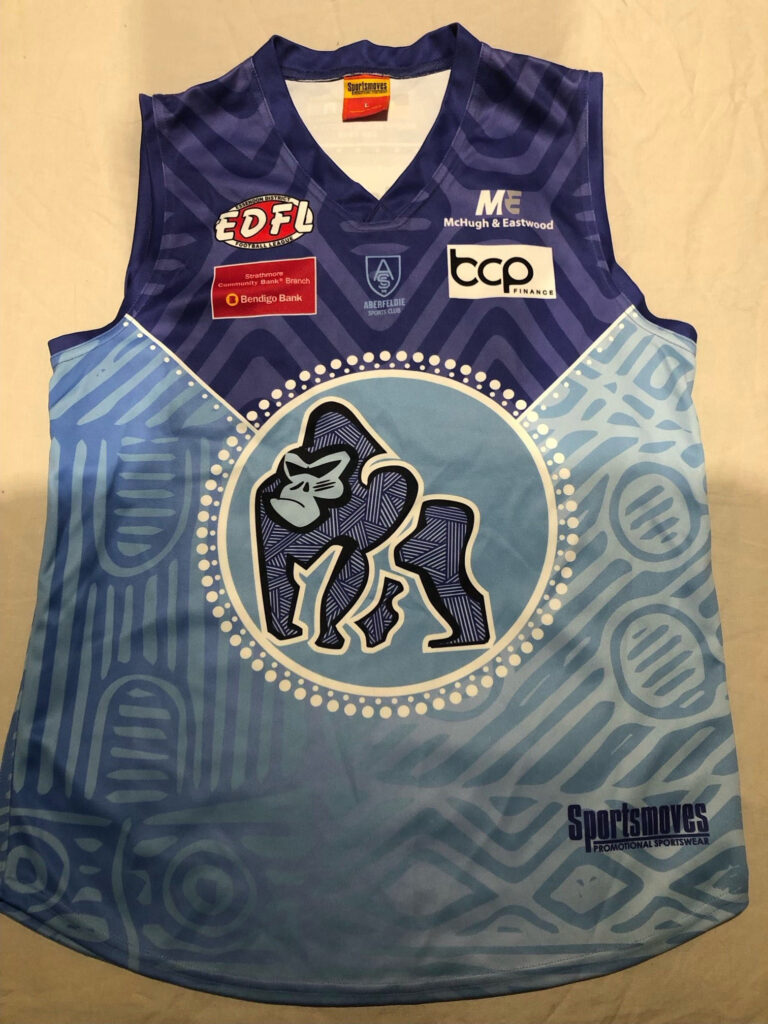
Artist: Kat Clarke
Story: The Aberfeldie Sports Club can be found on the unceded lands of the Wurundjeri people of the Kulin Nation.
Although the Gorilla is not an Australian animal, the club finds itself connected to many of the attributes the Gorilla displays.
Gorillas possess incredible strength, are resilient, family orientated and have a vital role in the ecosystem to rejuvenate vegetation.
Like the gorilla, the Aberfeldie Sporting Club prides itself on family-first values.
It plays its role within the community to develop the youth into future leaders and respectful contributors to society.
The club is proud to celebrate Indigenous culture.
It is also grateful for the learnings and contributions from the Indigenous people who have represented the two blues while assisting us to become a culturally safer place.
When: July 9th v Keilor (A)


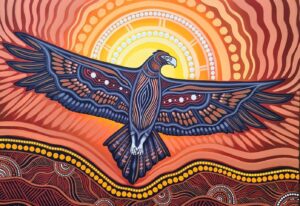
Artist: Jumper - Ty Macumber, Tommy Macumber and Ethan Walker. 'Eagles Sun' - Nathan Patterson
Story: Bunjil the Eagle has been synonymous with the Club and NAIDOC celebrations and is captured on our Indigenous guernsey.
Bunjil was the creator of all living things for the Wurundjeri people. The Wurundjeri people are the traditional owners of the greater Melbourne area that spans from the mountains to the ocean. This land will always be protected by the creator, Bunjil, who travels as an eagle.
Three of our Under 18.5 players embedded Nathan’s Bunjil the Eagle into the design of the rest of the guernsey. Brothers, Ty and Tommy Macumber, and Ethan Walker, proudly designed the guernsey around Bunjil the Eagle. The jumper has a story to tell.
Here it is in their own words:
The eagle is our totem. It’s watching over the country on which we live on and making sure we respect the land and the water. The gum leaves represent healing of the land and the footsteps guide us to follow the ancient path of the aboriginal people.
The coloured trim pays homage to sacred aboriginal colours.
Black - represents the Aboriginal people of Australia
Yellow - represents the sun, the giver of life and protector
Red - represents the red earth, the red ochre used in ceremonies and Aboriginal peoples’ spiritual relation to the land.
When: SENIOR MEN - July 2nd v Westmeadows (A) & July 9th v Moonee Valley (H)
SENIOR WOMEN'S July 9th v Tullamarine (H)

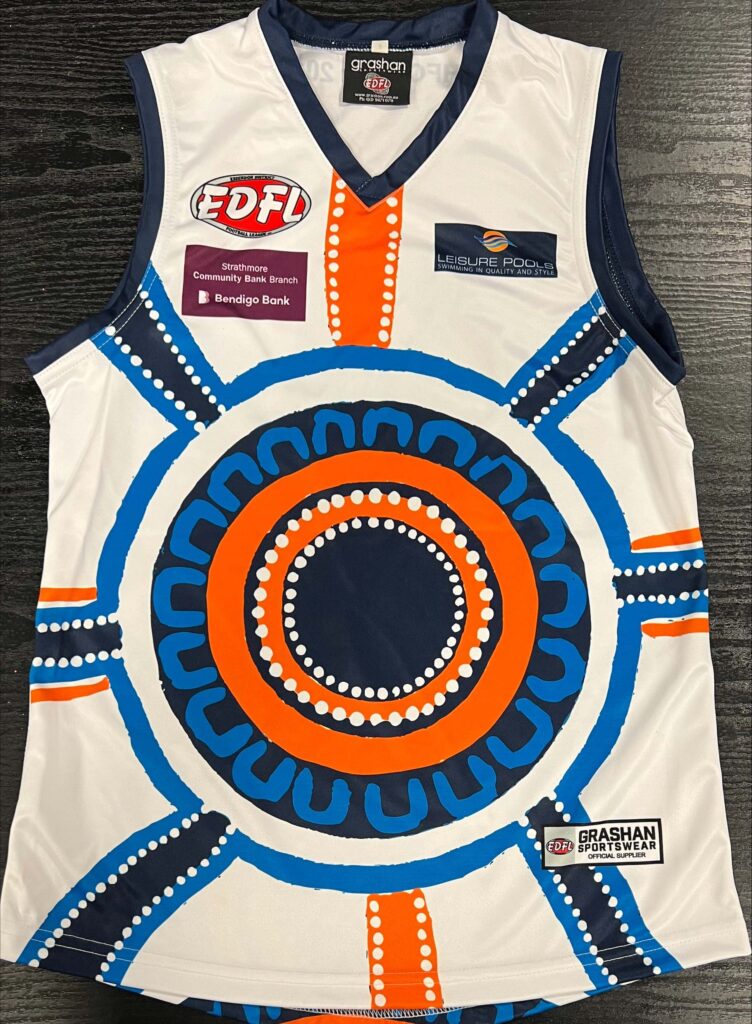
Artist: Mick Lovett
Story: The dark blue and orange circles represent the Burnside Heights ground and acknowledges the Wurundjeri people who are the traditional owners of the land.
The horseshoe shapes represent the 18 players that take the field to represent the club.
The outside lines show the different journeys people took to arrive at our club and the white dots throughout the jumper represent our community members.
When: June 25th v Coburg Districts (A) & July 2nd v Northern Saints (H)


Story: The mountains and the sun resembled the link between the land and the sun. With the wavy symbol representing the link to water.
When: June 25th v Burnside Heights (H)

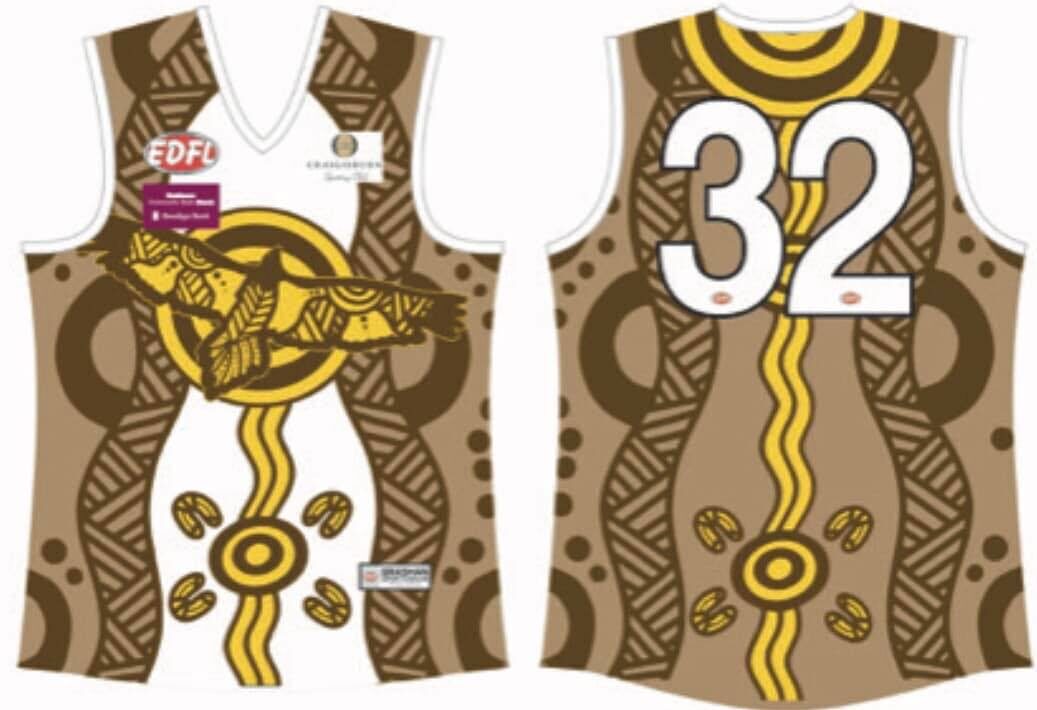
Artists: Lionel Bamblett, Jordan Crowhurst and Casey Brown
Story: We are proud Yorta Yorta, Wiradjuri and Dja Dja Wurrung men who have lived in Melbourne all our lives.
We pride ourselves on our connection to our community and culture, football plays a large part in our connections to one another.
This artwork represents our ties, to our culture and to our community.
Bunjil, the creator spirit, is depicted here flying through the air with the sun behind him and our people underneath him in our gathering place, which for us includes both our community and our sporting clubs.
When: July 2nd v Roxburgh Park (H)

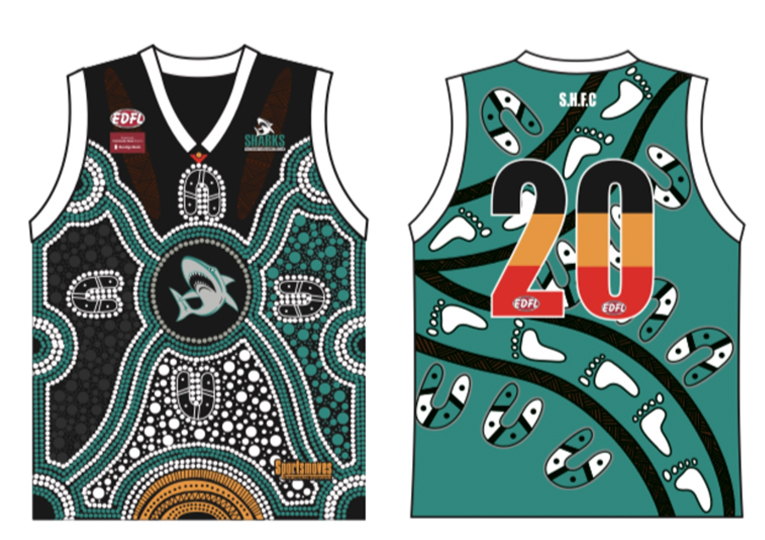
Artist: Joey Chatfield
Story: The colour palette was chosen to pay tribute to Aboriginal people through the black, yellow and red of their flag and to celebrate the club's history through its own colours of black, white and teal.
Front
The two centre outside semi circles represent family and community. The four semi circles represent the Juniors, Seniors, Women and Supers who are all connected back into the centre circle of the club (the Shark), which represents the central and connecting point.
The two top brown symbols are warrior shields which represent strength and provide protection from internal and external conflict and other warfare combat.
This is strength within and outside the club, on and off the field.
The sun is the giver of life and provides strength from the start to the end of the day.
The 'U' shape symbols that surround the centre circle represent people and in this case they are the players, supporters, committee and past players of the Hillside Football Club.
Back
The footprints represent the journey everyone is going on together, as players, as a club, supporters and as a whole community. We are all on the same path, one of education, cultural respect and understanding and reconciliation.
'U' shapes, as on the front, represent people. They are broken up into four quarters to signify that within the club they will commit to giving 100% effort throughout the day, the year and years to come.
The etchings from the warrior shields provide strength and protection on their journey together, both on and off the field.
When: May 30th v Airport West (H)


Artist: Cory McGrath
Story: Moonee Valley's jumper is traditionally black with white stripes, so it has been inverted. The circles and 'n' shapes on the bottom of the jumper represent the Club, the meeting place for players, coaches, volunteers and supporters.
The 'S' that runs through the jumper represents the Moonee Ponds Creek that runs along the Club and was a traditionally a source of food and water for people and animals.
The lighter grey dotted circles represent the greater community around the Moonee Valley area.
When: SENIOR MEN - July 16th v Roxburgh Park (H)
PREMIER DIVISION WOMEN - July 16th v Oak Park (A),
DIVISION ONE WOMEN - July 16th v Strathmore (A)


Artist: Mick Harding
Story: This is the story of Why Marram the Kangaroo has a tail and Warriin the Wombat doesn’t as told by Taungwurrung man Mick Harding.
“This story is important an important creation story to my people, the Taungwurrung people.
Marram & Warriin were good mates, but one day they had a fight because Warriin would not let Marram in his burrow to keep warm during a storm – so Marram cut off Warriins' tail with his axe.
Warriin got so mad he threw a spear at Marram, it became stuck in his back end and is now his tail”
When: SENIOR MEN - July 9th v Coburg Districts (H)
SENIOR WOMEN - July 2nd v Hillside (H)

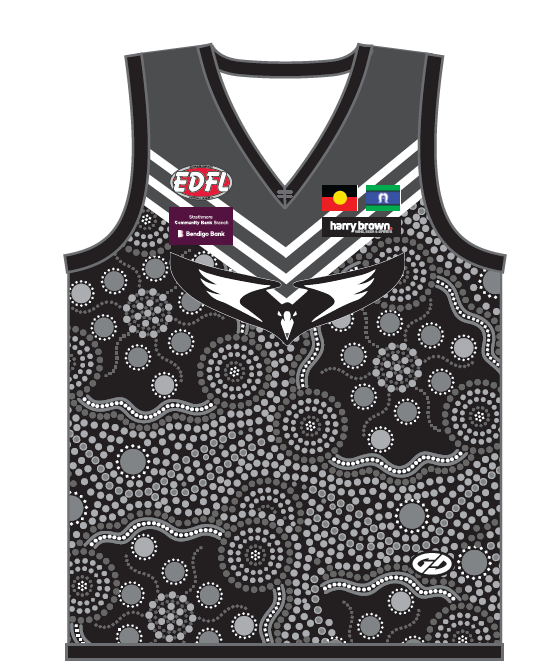
Artists: Tracey Winmar and Amy Paten
Story: Our NAIDOC jumper was designed by two members of the Roxburgh Park Football and Netball Club (RPFNC) Committee, Tracey Winmar and Amy Paten (Mother and Daughter). Tracey is a Noongar woman from Whadjuk/Ballardong country (WA) who has grown up on Wurundjeri country. Amy is a Noongar/Gunai Kurnai woman who has also grown up on Wurundjeri country.
This year is the first time that our Club has engaged Indigenous people to design a guernsey for the players to wear on the weekend of NAIDOC (July 9th). NAIDOC is an incredibly important time as it allows us to acknowledge and reflect that there is a strong history of culture and knowledge among Indigenous people. In football we also acknowledge their incredible talent and contributions to the game. As a Club, we believe it is important to support of this year’s theme ‘Get up! Stand up! Show up!’. It is not only important that we do everything we can to support our Indigenous family and friends, but we treat them with equal respect and advocate for them whenever we are in a position to do so.
Given the hardships of the last couple of years, the story behind the artwork is what RPFNC not only means to Tracey and Amy but to the people around them and how we have all reconnected through our love of football.
These three themes are what is so strongly embodied by the Club’s committee, players, coaches, family/friends, volunteers and supporters. There are traditional symbols in the artwork that represent three main themes: family, community and a meeting place. The circles represent the different cultures and backgrounds of people in our Club. The curved lines represent the different pathways we all travel to gather together, whether it is at the Club or travelling to different playing grounds (meeting places).
When: July 2nd v Craigieburn (A) & July 9th v Westmeadows (H)


Artist: Karen Lovett
Story: Our Inaugural Indigenous jumper was designed by local indigenous woman (& past junior parent of WFC) Karen Lovett.
Karen designed our jumper in 2021, but unfortunately, due to COVID delays, we were not able to reveal it.
So we are very excited to reveal in 2022 - our players will be Getting Up, Standing Up & Proudly Showing Up in Karen's design.
We would also like to thank Isabella Williams for setting Karen's designs to our jumper.
Karen's design focuses on the essence of Westmeadows Football Club & Willowbrook Reserve.
In and around our home ground, we have kangaroos, native plants and the Merri Creek - you can see these represented in Karen's design, with Kangaroo paws, native leaves & our stripe is the flow of water.
For many in our local area, the Westmeadows Football Club represents community, a safe place to gather - this is shown in the circles, and includes drawings of a gathering place for men, women and children, coming together hand in hand.
Westmeadows Football Club is very proud to be able to wear Karen's design and the time Karen has spent with us, sharing her story - we are all in it together.
When: July 2nd v Airport West (H) & July 9th v Roxburgh Park (A)